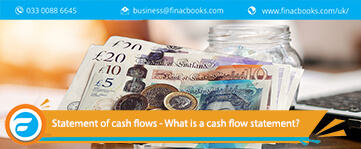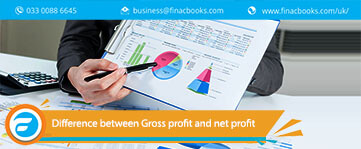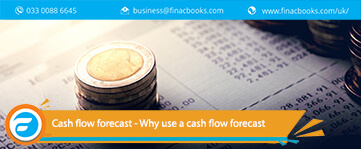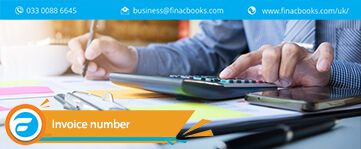The VAT Flat Rate Scheme helps businesses pay the same amount (roughly) of VAT without having to complete a lot of paperwork compared to other VAT schemes. It really helps simplify the VAT accounting process (VAT Return) for small businesses. This scheme helps the businesses to maintain a difference between the sum amount of VAT paid by the customers and the sum amount of VAT paid to HMRC.
You charge customers the VAT amount for using your goods or services (property management services or building or construction services) and pay your suppliers for using their goods or services. This is how the VAT works in general.

What is VAT?
VAT (value-added tax) is a tax levied in exchange for goods and services. For example, if a VAT-registered company sells a widget for £1, the customer will be charged £1.20. And then the VAT is required to be submitted to the government every three months via a VAT Return.
Any commodity sold by businesses is subject to VAT. For some items, a standard rate of 20% is used, but for many others, only 5% is used. And there is also such a thing as a zero rate. This doesn’t translate to being VAT-free. And why this is so is because even a zero-rated item must be mentioned in your VAT record keeping.
The VAT Flat Rate Scheme
The HMRC VAT Flat Rate Scheme has been made available for small businesses (including smaller limited companies) ever since the 2002 budget. This helps prevent all the administrative burdens associated with preparing VAT returns.
You can pay a fixed rate rather than accounting for input and output VAT as a percentage of your relevant turnover. This rate varies according to your activity. Businesses falling under low-cost trades are charged a higher flat rate of 16.5 percent. This was put in place to crack down on people who, according to the government, were abusing the scheme. Because these companies spend so little on goods, they had very little equivalent input VAT.
Eligibility Criteria for VAT Flat Rate Scheme
- First, your company must be VAT-registered and anticipate a VAT taxable turnover of roughly £150,000 in the next year.
- You must leave the flat-rate tax scheme if, in the previous year, your turnover was around £230,000 (including VAT) on the anniversary of joining. And the same applies if you expect it to be in the next year.
- If your yearly turnover is less than £85,001, you can cancel your VAT registration.
- If you want to become VAT-registered, you should consider whether it’s better for you to sign up for the VAT scheme rather than using the Standard VAT accounting scheme.
VAT Flat Rate Scheme: Non-Eligibility Criteria
- You've been in the scheme before and left less than a year ago (you must wait a year before you can rejoin) you’ve been charged with a VAT offence or a penalty for VAT evasion within the last 12 months You use a second-hand margin scheme
- You’re a member of a VAT group, or you’ve registered for VAT within the last 24 months as a division of a larger business.
Avoiding Flat Rate Scheme
The flat rate taxable sales include VAT-exempt sales. Therefore, it is not advisable to use this scheme if you are into exempt sales, or else you will end up paying more in VAT.
Joining the scheme is likely to cost you more in VAT if you make a lot of zero-rated sales or buy a lot of standard-rated goods and services. Businesses that are not on the Flat Rate Scheme normally receive a quarterly repayment from HMRC, which they would lose if they joined the scheme.
Further, this scheme will probably cost you more in VAT if you end up making several zero-rated sales or in case you buy a lot of standard-rated goods and services. And if you join this scheme, you won’t receive the quarterly payments paid to all the businesses by HMRC because they generally make payments to the businesses that haven’t joined the scheme.
Flat Rates - Limited Cost Business
Your company will be classified as a 'limited-cost business' or a 'limited-cost trader if it spends a tiny sum of money on goods, and paying a high flat normal rate of 16.5 percent is a must.
You have to spend more than 2 percent of your revenue on goods to be classified as a low-cost business or a low-cost trader. You will still be considered the same even if you spend more than 2% but less than £1,000 a year.
Flat Rates for Different Types of Business
If your company isn't a low-cost trader, your flat rate will be determined by the type of business you run. Different industries have different flat rates.
At the low end, retailers selling food, tobacco, or children's clothing pays a flat rate of 4%. Accountants, bookkeepers, computer and information technology consultants, civil and structural engineers, architects, and surveyors have a flat rate of 14.5 percent.
Potential Advantages of Flat Rate Scheme
- You are not required to record the VAT charged by you on each sale and purchase, as is the case with standard VAT accounting. This implies that you spend more time on your business than on the books.
- If your business is registered with VAT for the first year, there will be a one percent reduction in the total percentage covered at a flat rate.
- Businesses don't have to follow a complete list of VAT Flat Rate Scheme
- Experience businesses using Flat Rate Scheme don't have to worry about mistakes while filing
Disadvantages of Flat Rate Scheme
- It covers taxable sales during the calculation if they come under zero-rated or exemption. This will certainly lead to paying extra VAT, which is a loss for a business.
- If your business receives regular VAT rebates, then better to avoid
- If you are buying standard-rated items, then your business is not authorised to reclaim VAT on every purchase done.
Conclusion:
This article was able to help you understand VAT flat rate scheme is a simple and comprehensible manner covering information like VAT flat rate percentage, flat rate VAT scheme, vat registered business, and the likes.
Any Questions? Request a callback from our Tax Experts.


































